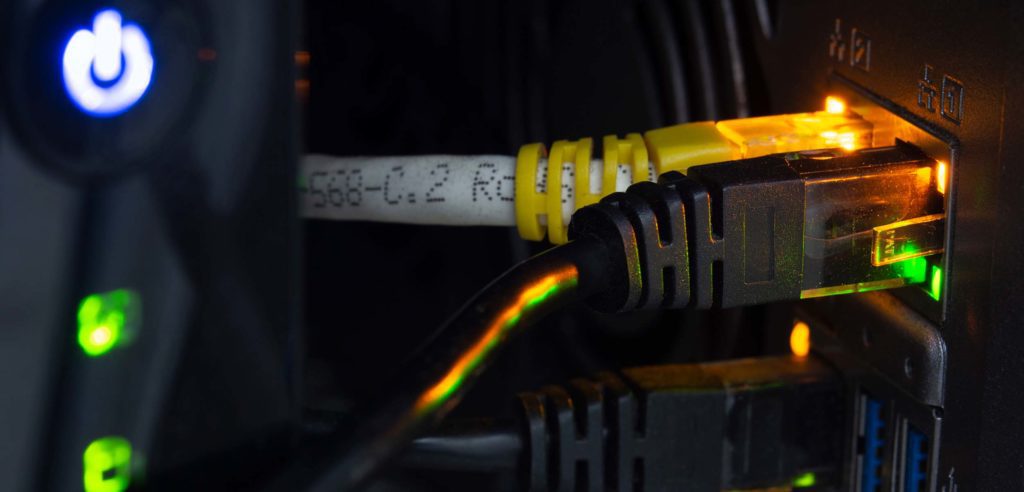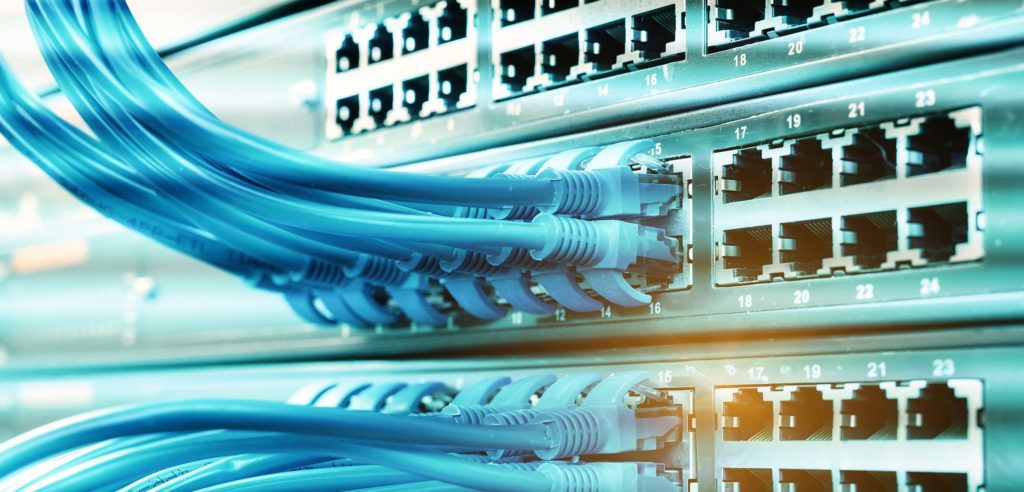Staying connected in every part of your home has never been more important. Internet cables are one of the most reliable ways to build a network in your living space. Generally, they provide a secure network connection and are simple to set up.
Your devices need the power to function and many of today’s electronics require a steady internet connection. Sometimes this means ethernet and electrical cables are run next to each other. But can this cause problems or complications?
Let’s discuss what to do and what not to do when it comes to running internet cables. Call the professionals at 4-Star Electric for professional home network setups that won’t compromise your connections or electrical safety.

Running Ethernet and Power Cables Together
Although it may be convenient to run long lengths of power and internet cables together or even wind them to create a “super-cable”, this poses some risks that should be considered.
The quality of the ethernet signal can also degrade from interference caused by the power cables, creating issues when it comes to using the devices in your home or office.
Data Integrity & Safety
It’s not always a good idea to run low and high-voltage cables together. There are, for example, safety considerations that affect data integrity. When high and low voltage cables are put alongside each other, induction can become a problem.
Sometimes the greater voltage can leap to the lower voltage cable. Data and the connected device could be harmed from the induced voltage in the internet cable.
If you absolutely need to run internet and electrical cables in the same location, there are several precautions you should take to avoid safety issues and data loss. Contacting a professional with industry experience is the best way to ensure everything runs safely, and that the installations are compliant with the Canadian electrical code.
Shielded vs Unshielded Internet Cables
Ethernet cables can be shielded or unshielded. They are both designed to provide power and data to connected devices, but there’s a small key difference.
Shielded cables contain a thin foil cover protecting the internal wires from interference. This foil shielding works to protect data integrity and speed, while preventing data interruption caused by other devices, including electrical power cables.
Because of the additional foil material contained inside, shielded cables are slightly larger in diameter.

How to Run Power and Internet Cables Together
Sometimes, running power cables and internet cables together is unavoidable. There are some best practices you can follow to protect your devices and get the best performance from your connections. But hiring a qualified electrician will help get your internet connected cleanly and risk-free.
Speak to the experts at 4-Star Electric if you’re not quite comfortable running internet cables alongside other electrical in your home.
Cable Distance is Important
Cable distance plays a huge role in the safety of a shared installation. Depending on the situation, the cable types need to be a certain distance apart so that they don’t induce a current. This can potentially cause heat from electrical currents jumping from one cable to the next.
Never let the cables touch and leave as much space as possible between them when you must run cables alongside each other.
Don’t Run The Cables Parallel
It’s most simple to run the cables parallel, but the problem is that you’re increasing the chance of interference. The ethernet cable’s low voltage is required for data transfer. It produces the magnetic field that transmits and receives data.
But a high-voltage data cable might interfere with the magnetic field of an internet line when they run alongside each other for long distances. The risk of this occurring can be limited by crossing the cables perpendicularly. This limits the power cable from disrupting the ethernet cable’s magnetic field.
Follow All Pertinent Electrical Codes
Electrical code exists for a reason. Over time, this code is revised to hold installations to a higher standard, ensuring the safety and efficiency of structures, devices, and the people that use them. As our homes continue to demand more and more electrical power, it’s important to stay aware and compliant with the most current electrical safety codes.
This information should always be referenced and interpreted accurately to avoid possible issues down the road.
Staying on top of electrical code is part of a professional electrician’s job. Having internet and power lines installed by an expert helps keep you protected. Protected from the risks of electrical hazards. And protected from potential rewiring if a DIY job is done improperly.
Stay Connected Safely
The answer to whether or not internet cables can be run beside power lines in your walls, is no. But there are ways to do it more effectively and safely. Always cross cables at 90 degrees rather than running alongside each other. And keep a distance between ethernet and power lines to help protect data being transferred.
4-Star Electric has decades of experience in the electrical field, and always stays current with new technologies and strategies to help meet your needs. Our service work is always 100% guaranteed, which means your network installation will be done the right way. We promise to keep your connections crisp and to keep your data away from damage.
Give us a call for electrical help with your home office or if you need to expand your internet connectivity.


